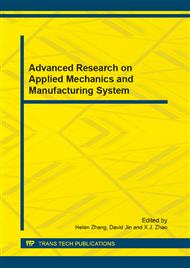p.241
p.245
p.250
p.255
p.259
p.263
p.267
p.271
p.276
Research on Equal Flow Distribution of Pulverized Coal-Air Mixture in Parallel Pipeline
Abstract:
It is very important to maintain the flow rate of pulverized coal-air mixture in different pipelines equal to each other in power generation units. As the usual practice, the resistance regulation is done to get an equal air flow velocity with the absence of pulverized coal. The paper indicates that such regulation can not ensure the equal flow rate of the mixture with pulverized coal. The purpose of this paper was to develop a method to achieve the same velocities of the mixture with certain concentration. The resistance characteristics of the pipeline and the adjustable plate corresponding to the pulverized coal-air mixture were taken into account to study the flow difference between pipelines. According to the initial flow difference, the method to regulate the flow rate without pulverized coal is got and thus the equal flow state of the mixture is ensured.
Info:
Periodical:
Pages:
259-262
Citation:
Online since:
December 2012
Authors:
Price:
Сopyright:
© 2013 Trans Tech Publications Ltd. All Rights Reserved
Share:
Citation:


